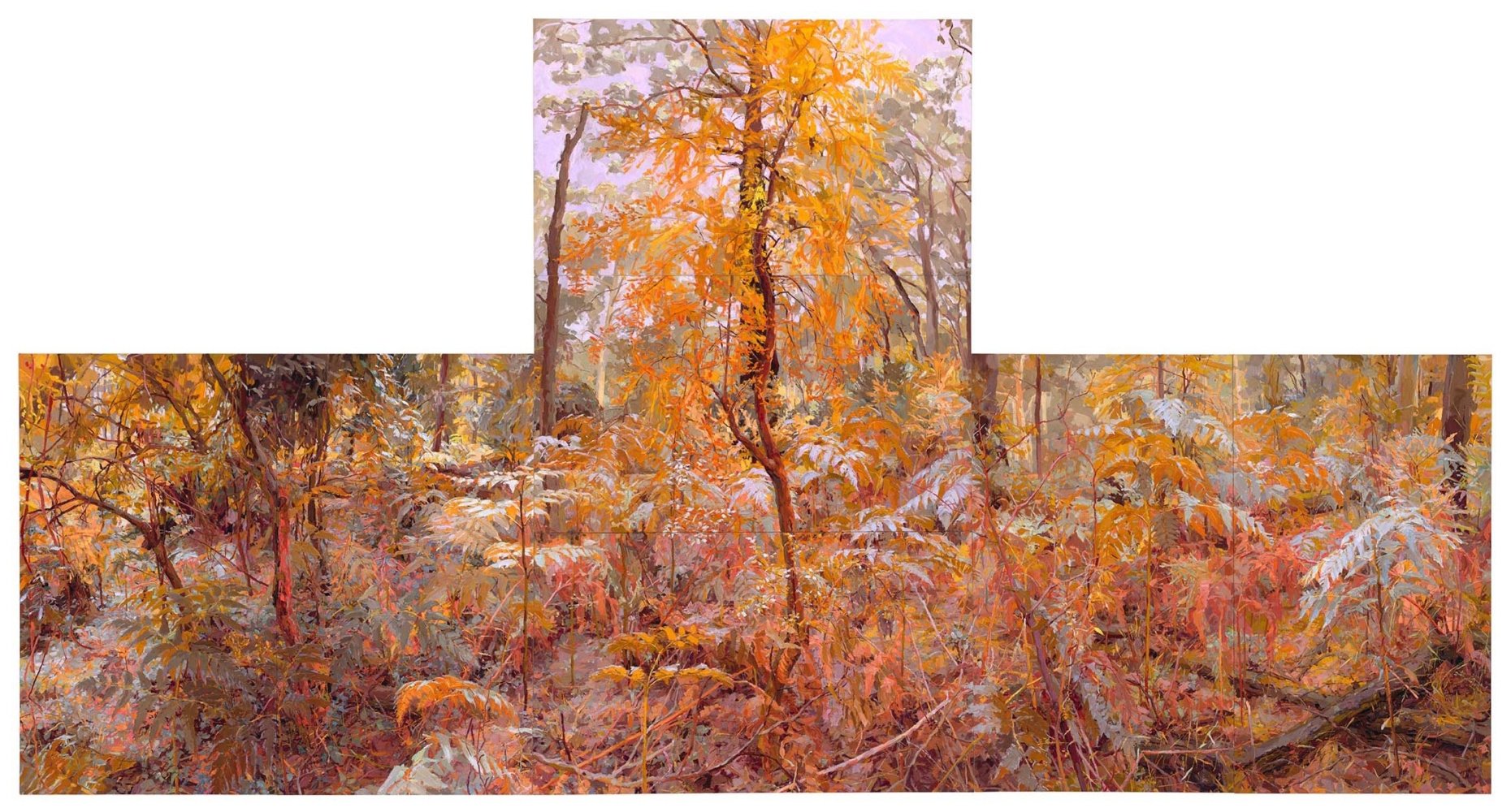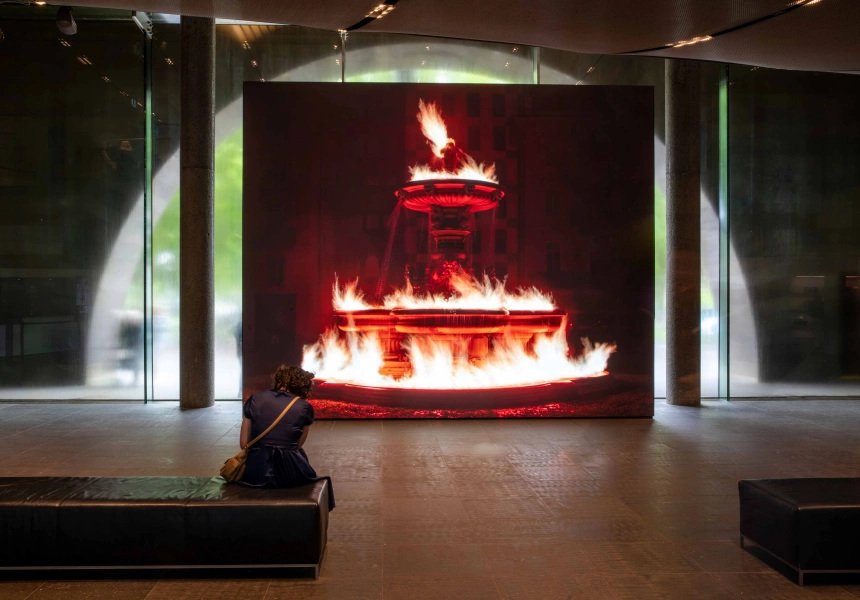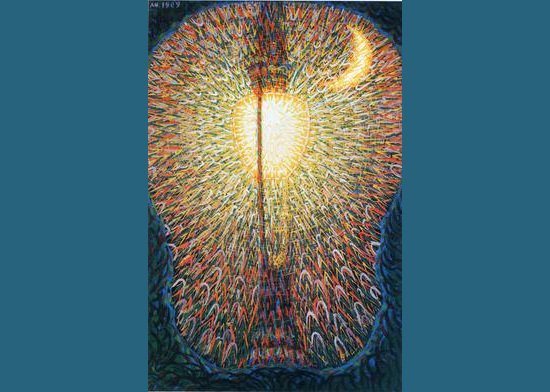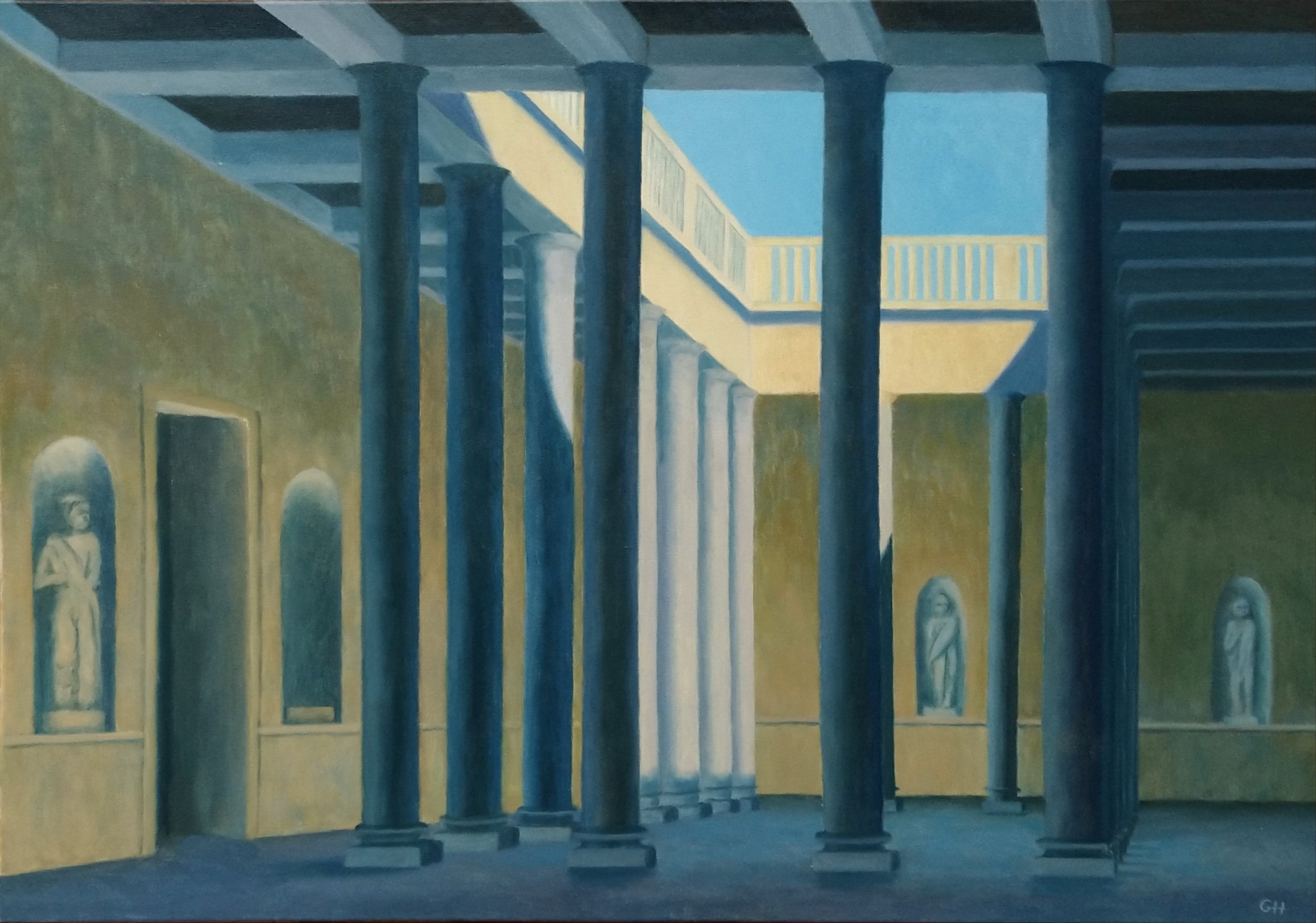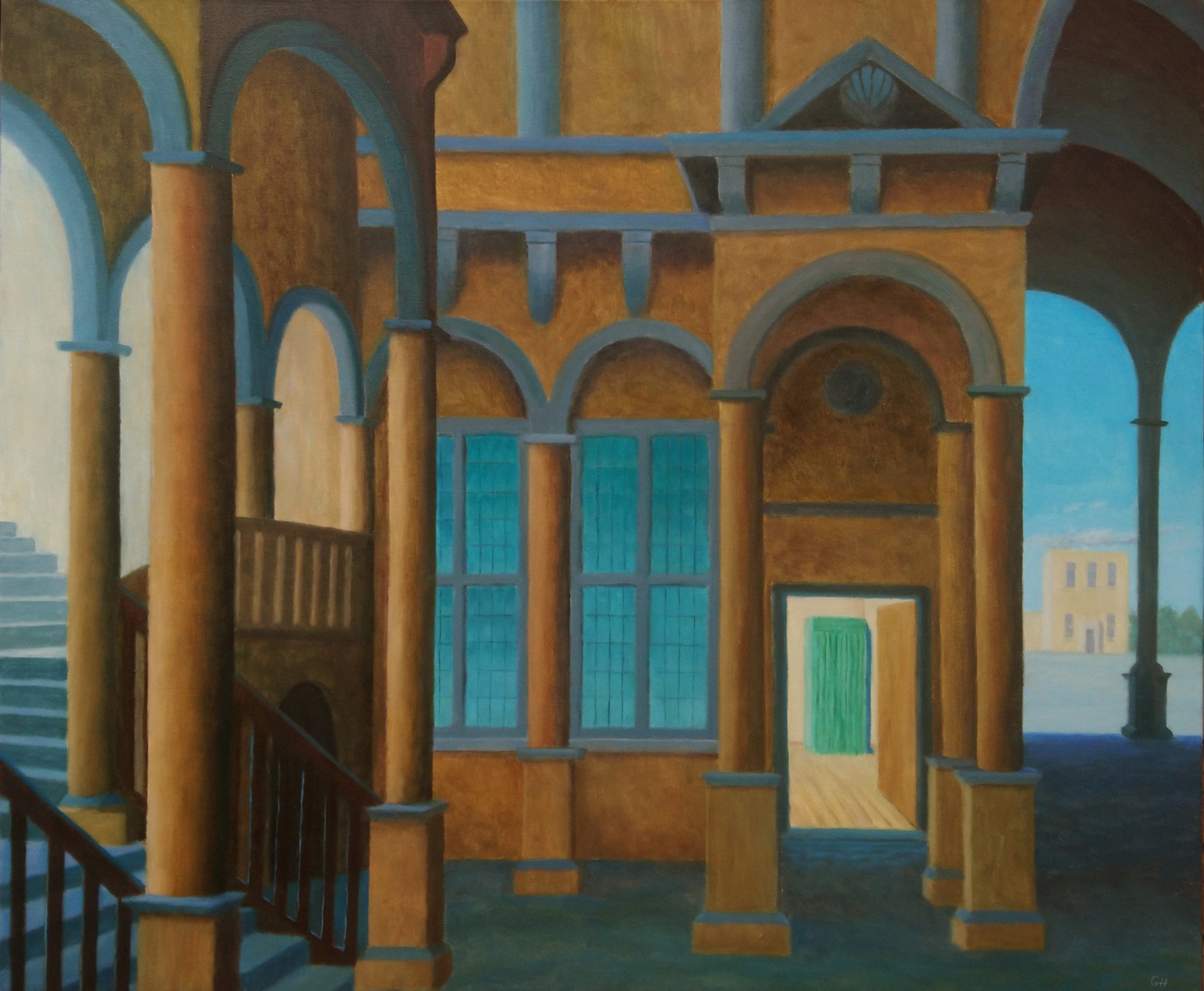For me, one of the highlights of the recent Triennial at the National Gallery of Victoria was the painting “Daily Ceremony, 2022” produced by Hulda Guzman, an artist of the Dominican Republic. It’s one of the most inventive self portraits I’ve seen in recent times and includes her pet rooster and prancing cats. In the NGV magazine, she describes the work as an autobiographical narrative, depicting a ritualistic summoning of creative energy.
The setting is a new studio she designed with her father in a very remote area in the Dominican Republic where her nearest neighbour is at least 2 kilometres away. She claims to have been inspired by the themes and ideas of the surrealists, but she does not reference dreams and other states of consciousness in her work. Instead, she is more interested in the “hidden parts of ourselves - all those energies that come into play, the things that are not perceivable to our senses, such as our fears and demons that we try to repress.”
Daily Ceremony 2022, Hulda Guzman, synthetic polymer paint and gouche on cedar & mahogany, 140.6 x 122 cm
The triangles of light, the prancing cats and the symmetry are intended to invoke the cheerfulness, buoyancy, high vibration and celebration of creative energy and the uplifting energies of nature and consciousness.
Guzman tells us that the dance session becomes a meditative practice to seek peace and to channel the inspiring Taino spirit, which appears as an outline in the triangle of light. This spirit is a central concept in art and ritual to the Caribbean peoples, and was thought to inhabit trees, stones and other aspects of the landscape.
She also explains the importance of being in the right headspace when producing her work. “When I’m painting and experiencing positive vibrations, I believe these vibrations transfer into the painting and the viewer afterwards.” The feedback she gets from viewers of her work correspond to how she feels when painting. “It’s a beautiful thing, and it makes me relate to people that way. I would never want to transfer any negative emotions, so I always make sure I’m in the right headspace when I paint.”
When I think of the headspace I often find myself in when painting, it’s a wonder I can produce anything at all, let alone being able to mount exhibitions and sell my work. But this article and Guzman’s work gives me cause for thought and to perhaps be more appreciative of the creative spirit that, I believe, lurks within all of us.
Hulda Guzman’s paintings often depict tropical settings and naturalistic motifs. She has two sisters, one a sculptor and the other a filmmaker. “Daily Ceremony 2022” has been purchased by the NGV.
---------------------------------------
The year 2024 is fast becoming the year of the female artist, judging by what I’ve seen so far. At Geelong Gallery there is an enormous print exhibition staged by Dianne Fogwell. It consists of 56 hand printed panels featuring linocuts, woodcuts, burn drawings and pigmented ink on paper. It runs until 28th July.
Dianne Fogwell at Geelong Gallery
At Niagara Gallery in Melbourne recently, there was the exhibition “Lifting The Veil” consisting of paintings by Julia Ciccarone, one of my favourite local artists.
Julia Ciccarone, "We Are All Stories In The End" 2023, oil on linen, 122 x 183 cm
And recently at Australian Galleries in Collingwood there was an exhibition of paintings, drawings and ceramics by Mary Tonkin titled “Both Sides Now”.
Mary Tonkin, "Coprosma Madonna, Kalorama", 2021-22, oil on linen, 320 x 610 cm (Australian Galleries)
References;
NGV Magazine



